
The next thing we are going to take a look at for Kotoku-in is the interior of the Great Buddha.
To the left of the bronze sculpture is where one can pay and go inside it. And it’s fairly inexpensive, if I recall, the price to go inside was around Y25 (for those in the US, it costs less than a quarter).
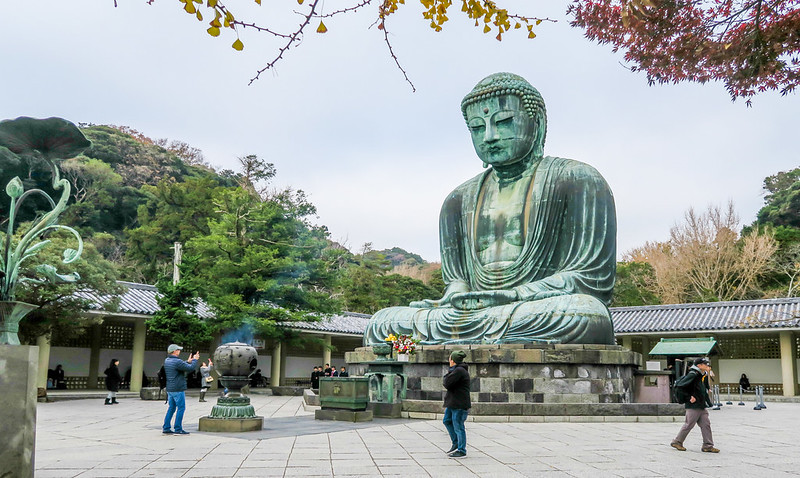
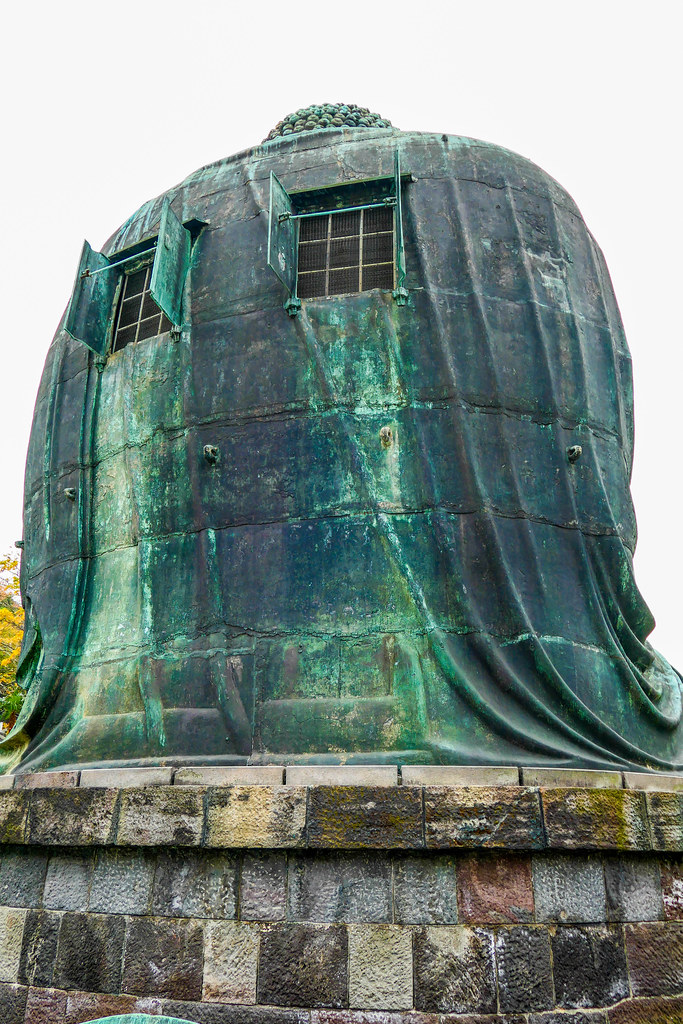

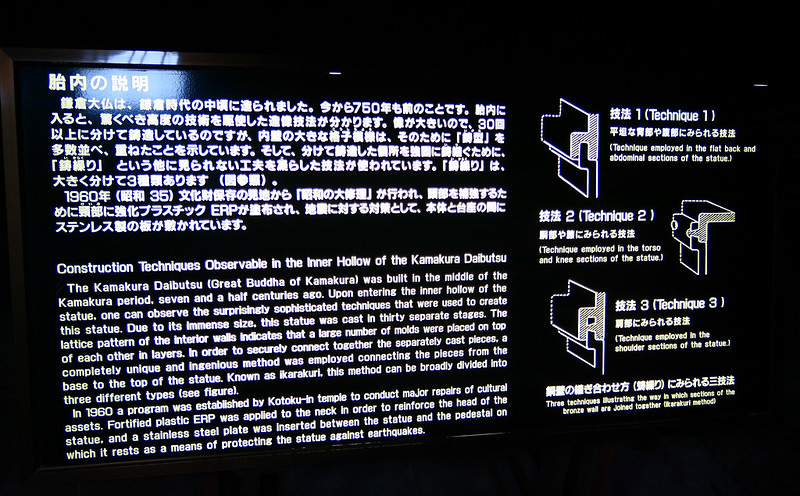
According to a sign inside:
The Kamakura Daibutsu (Great Buddha of Kamakura) was built in the middle of the Kamakura period, seven and a half centuries ago. Upon entering the inner hollow of the statue, one can observe the surprisingly sophisticated techniques that were used to create this statue. Due to its immense size, this statue was case in thirty separate stages. The lattice pattern of the interior walls indicates that a large number of molds were placed on top of each other in layers. In order to securely connect together that separately cast pieces, a completely unique and ingenious method was employed connecting the pieces from the base to the top of the statue. Known as ikarakuri, this method can be broadly divided into three different types.
In 1960, a program was established by Kotoku-in temple to conduct major repairs of cultural assets. Fortified plastic ERP was applied to the neck in order to reinforce the head of the statue, and a stainless steel plate was inserted between the statue and the pedestal on which it rests as a means of protecting the statue against earthquakes.

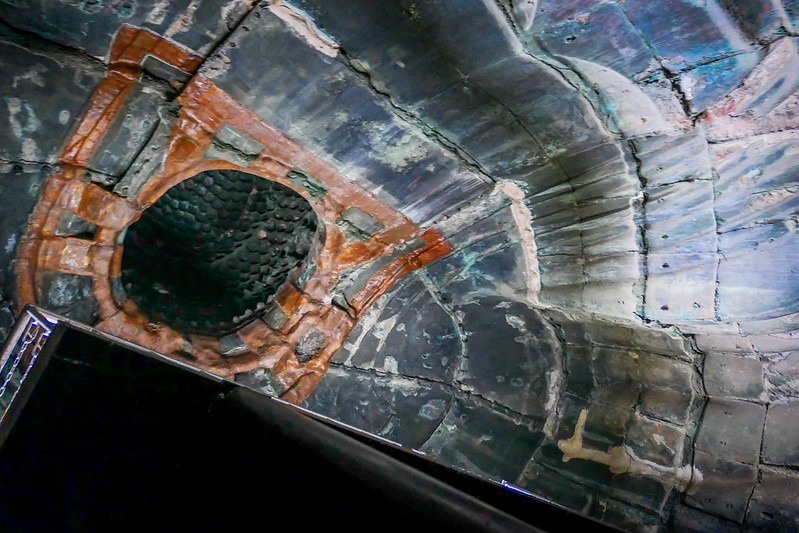
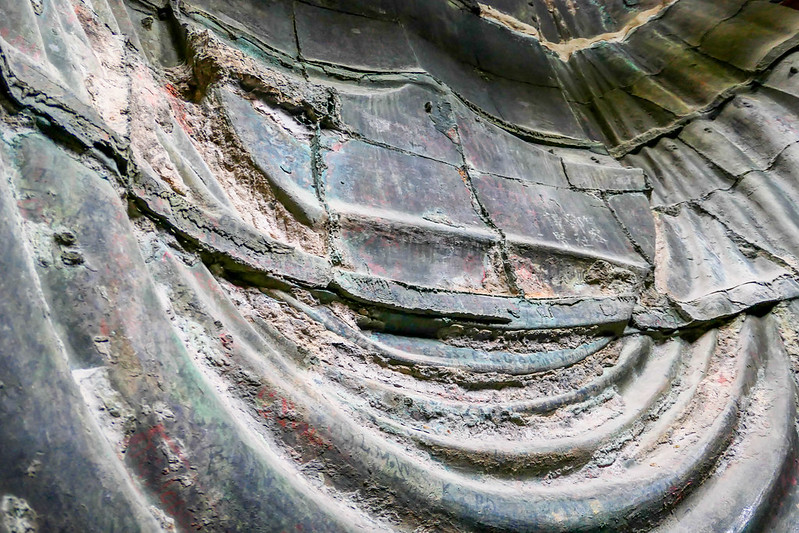
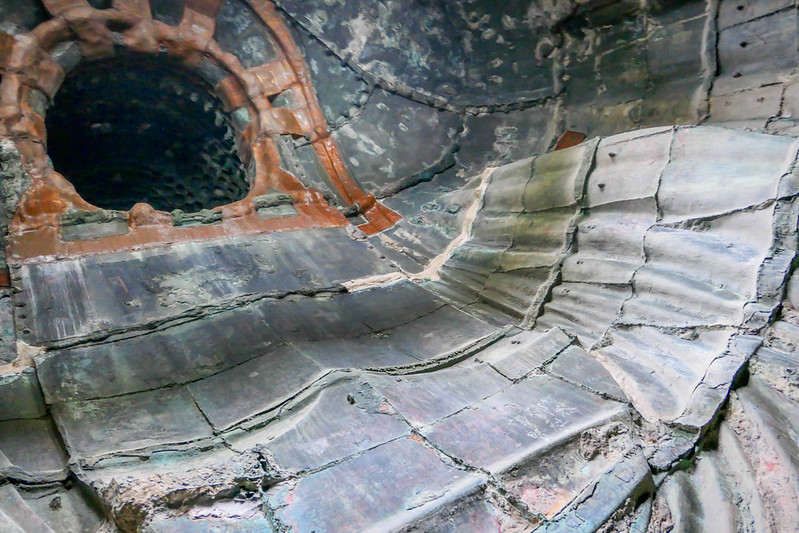
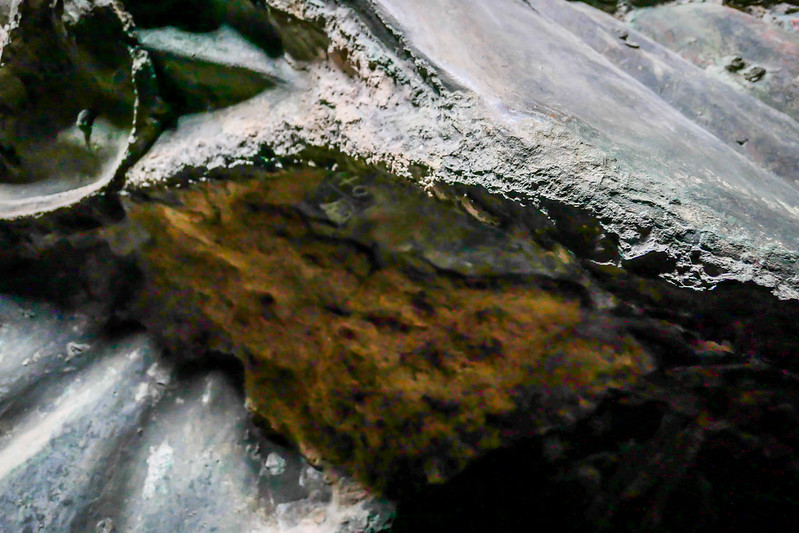
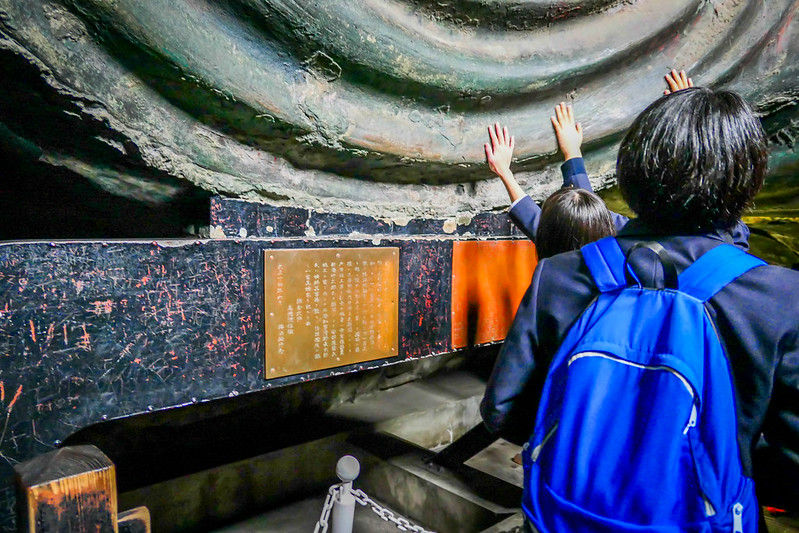
The interior space inside the Great Buddha is not large, so only several dozen can fit into it at once. But it’s interesting to see ways they reinforced the Great Buddha from inside the body to prevent it from collapsing from an earthquake.
Precautions that started way back in 1960 and for the most part, making sure that the Great Buddha is well-taken care of for many years and generations later.
Tomorrow I will post my final thoughts and final look around Kotoku-in in Kamakura!
